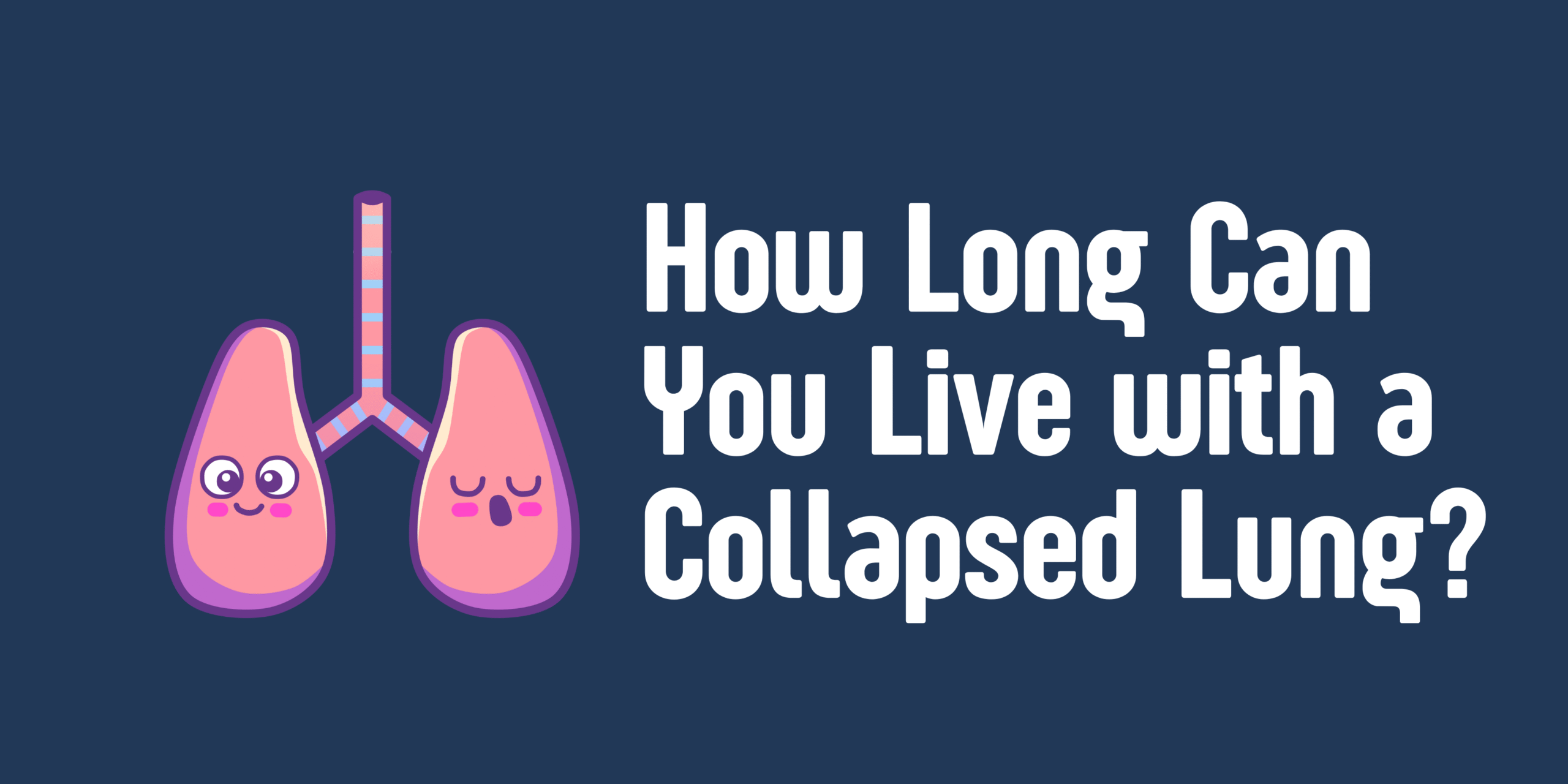A collapsed lung, medically known as a pneumothorax, is a serious condition that occurs when air escapes from the lung into the space between the lung and the chest wall, causing the lung to collapse. This condition can be life-threatening depending on its severity, but with prompt medical attention and proper management, many people can recover fully. Pneumothorax treatment is crucial in managing the condition and preventing complications. In this blog post, we will explore the causes of a collapsed lung, its symptoms, how it affects the body, and the critical question: How long can someone live with a collapsed lung?
What is a Collapsed Lung?
A pneumothorax occurs when air or gas accumulates in the pleural space, the area between the lung and the chest wall. This prevents the lung from expanding fully, leading to a partial or complete collapse of the lung. Pneumothorax can happen suddenly and unexpectedly, but in some cases, it may be the result of an underlying medical condition or trauma.
The lungs are protected by the pleura, a double-layered membrane. When there is a tear or hole in the lung or the pleura, air can leak out, causing the lung to collapse. A collapsed lung can be classified into several types, including:
Tension Pneumothorax – A severe form of pneumothorax that can lead to life-threatening complications if not treated immediately.
Spontaneous Pneumothorax – Occurs without any apparent cause, often in young, otherwise healthy individuals.
Traumatic Pneumothorax – Occurs as a result of trauma to the chest, such as from a car accident, rib fracture, or surgery.
Causes of a Collapsed Lung
Several factors can contribute to the development of a collapsed lung, including:
Medical Procedures – In rare cases, medical procedures like lung biopsies or mechanical ventilation can lead to a pneumothorax.
Underlying Lung Diseases – Conditions like chronic obstructive pulmonary disease (COPD), asthma, cystic fibrosis, or tuberculosis can increase the risk of a pneumothorax.
Trauma – Injury to the chest, such as a broken rib or a puncture wound, can lead to the collapse of the lung.
Spontaneous Pneumothorax – This type can occur in healthy individuals with no known lung disease, usually in people who are tall and thin, particularly in males aged 20 to 40.
Symptoms of a Collapsed Lung
A collapsed lung often presents with a range of symptoms, which can vary based on the severity of the collapse and the underlying cause. The most common symptoms of a pneumothorax include:
- Sharp, Sudden Chest Pain: This pain can be severe and is usually localized on one side of the chest.
- Shortness of Breath: Difficulty breathing, especially with deep breaths, is a common symptom.
- Rapid Breathing or Heart Rate: The body attempts to compensate for the lack of oxygen by increasing the heart and respiratory rates.
- Fatigue or Weakness: As oxygen levels decrease, individuals may feel unusually tired or weak.
- Bluish Skin: A lack of oxygen can lead to cyanosis, where the skin, lips, or nails may turn a bluish color.
In some cases, especially with smaller pneumothoraces, individuals may not experience any noticeable symptoms and the condition may be discovered incidentally during a medical examination for another issue.
How Long Can You Live with a Collapsed Lung?
The question of how long a person can live with a collapsed lung does not have a straightforward answer. The answer largely depends on the size and severity of the pneumothorax, the underlying health condition of the individual, and how quickly medical intervention is received.
1. Small Pneumothorax
In cases where the pneumothorax is small and the individual is otherwise healthy, the body may naturally reabsorb the air trapped between the lung and the chest wall. These types of pneumothorax may resolve on their own within a few days to weeks without the need for invasive treatment. However, medical monitoring is still important to ensure that the lung reinflates properly.
For individuals with a small pneumothorax, the condition may not be life-threatening. In these cases, people can typically live for a while without immediate intervention, though they should seek medical care to prevent complications.
2. Large or Tension Pneumothorax
A large or tension pneumothorax is much more dangerous and requires immediate medical attention. A tension pneumothorax occurs when air enters the pleural space and cannot escape, leading to increased pressure on the heart and other vital organs. This condition can rapidly become life-threatening, as it may cause a drop in blood pressure and lead to organ failure.
If a tension pneumothorax is not treated within minutes to hours, it can result in cardiac arrest and death. This is why it is critical to seek emergency medical care at the first sign of severe symptoms.
3. Impact of Pre-existing Health Conditions
The prognosis for an individual with a collapsed lung is also influenced by their overall health. People with pre-existing lung diseases like COPD, asthma, or emphysema may be at a higher risk of complications from a pneumothorax. In these cases, the lung’s ability to heal itself may be compromised, and the recovery process can take longer.
4. Treatment and Recovery
The treatment for a collapsed lung depends on the type and severity of the pneumothorax:
- Observation: For small pneumothoraces with minimal symptoms, doctors may choose to monitor the condition over time, allowing the body to reabsorb the air.
- Needle Aspiration or Chest Tube: Larger pneumothoraces may require the insertion of a needle or chest tube to remove the trapped air and allow the lung to reinflate.
- Surgery: In some cases, surgery may be needed to close the hole in the lung and prevent further air leakage.
Recovery time varies depending on the treatment and the severity of the pneumothorax. For those with a mild pneumothorax, recovery can occur in just a few days. However, for more severe cases, the recovery process could take weeks to months, and some individuals may require follow-up care to ensure the lung remains fully expanded.
Long-term Outlook
While most individuals who experience a collapsed lung can recover fully with the right treatment, there is a possibility of recurrence, particularly for those who have spontaneous pneumothorax or underlying lung conditions. Doctors may recommend lifestyle changes, smoking cessation, or surgery to reduce the likelihood of future pneumothorax episodes.
Conclusion
The ability to live with a collapsed lung depends on several factors, including the type of pneumothorax, its size, the person’s overall health, and how quickly medical attention is received. A small pneumothorax may resolve on its own with minimal risk, while a large or tension pneumothorax requires immediate medical intervention to prevent life-threatening complications.
If you suspect you have a collapsed lung, it is crucial to seek medical care as soon as possible. Early diagnosis and treatment can significantly improve outcomes and reduce the risk of complications. By understanding the signs and symptoms, you can take swift action to protect your health and wellbeing.



